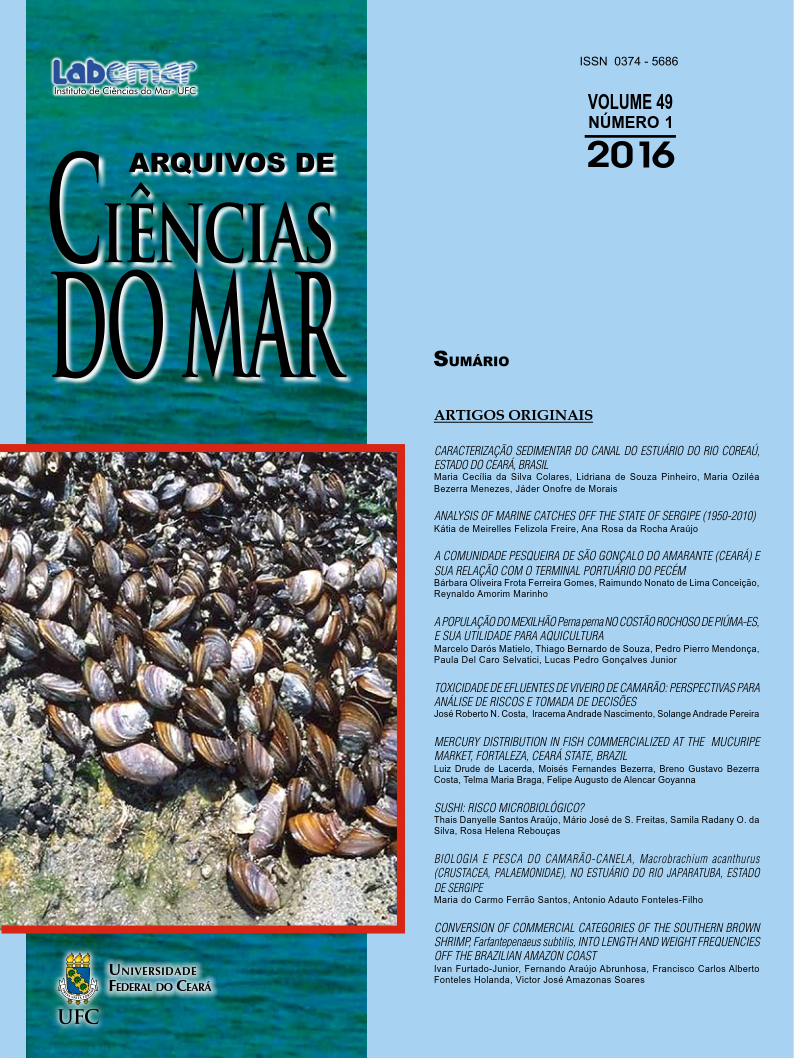Toxicity of the effluents from shrimp ponds: outlook for risk analysis and decision-making
DOI:
https://doi.org/10.32360/acmar.v49i1.6158Keywords:
toxicity, shrimp effluent, bioassay, oyster embryos.Abstract
Shrimp farming, has grown worldwide above the average of agricultural activities over the last decade and, like any human enterprise, it has also altered in different ways the place of its installation. Little scientific research has been produced aiming at their mitigation, especially as to the evaluation of the impacts caused by the activity’s effluents. The objectives of this study were to evaluate the toxicity of shrimp ponds effluents while being drained to enable the shrimp harvest, and to ascertain the existence of differences in water quality between the various layers of the water column. Tests were performed with embryos of the mangrove oyster Crassostrea rhizophorae , trying to relate possible abnormalities with the measured values of physical-chemical parameters in effluent samples. The bioassays with embryos proved the occurrence of effluent toxicity in the organisms and, applied together with the analysis of physico-chemical parameters, have been found to contribute to a better assessment of the water’s quality in ponds. The results also showed the existence of a quality gradient along the water column of shrimp ponds, where the surface layer showed a better quality than the bottom substrate.
Downloads
Published
Issue
Section
License
1. Proposta de Política para Periódicos de Acesso Livre
Autores que publicam nesta revista concordam com os seguintes termos:
- Autores mantém os direitos autorais e concedem à revista o direito de primeira publicação, com o trabalho simultaneamente licenciado sob a Licença Creative Commons Attribution que permite o compartilhamento do trabalho com reconhecimento da autoria e publicação inicial nesta revista.
- Autores têm autorização para assumir contratos adicionais separadamente, para distribuição não-exclusiva da versão do trabalho publicada nesta revista (ex.: publicar em repositório institucional ou como capítulo de livro), com reconhecimento de autoria e publicação inicial nesta revista.
- Autores têm permissão e são estimulados a publicar e distribuir seu trabalho online (ex.: em repositórios institucionais ou na sua página pessoal) a qualquer ponto antes ou durante o processo editorial, já que isso pode gerar alterações produtivas, bem como aumentar o impacto e a citação do trabalho publicado (Veja O Efeito do Acesso Livre).

